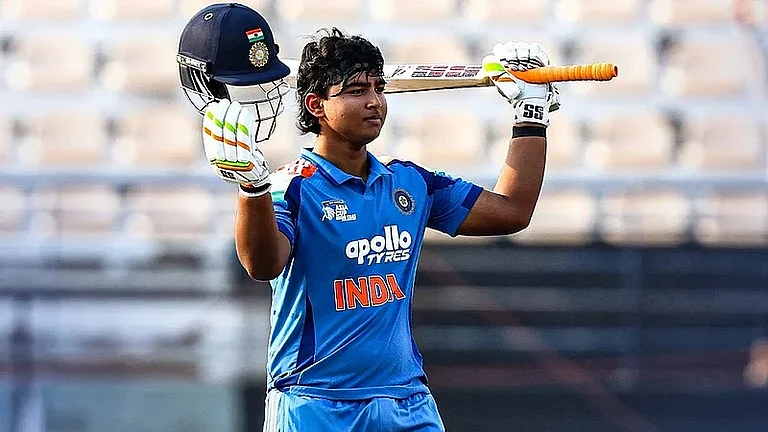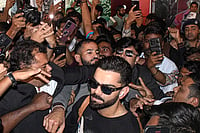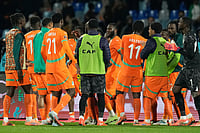
Flash Of Flesh, Acres Of Art
Can a city be exciting even if you have been there a few times? For a first-time visitor, sure, any place worth its name offers a cornucopia of delights. Paris has the Eiffel Tower, Versailles, the Louvre and the Left Bank of the Seine. And, of course, Moulin Rouge and Lido, the two permanent shows which are a must on every Indian’s itinerary. But if you have seen these night spots once, you have seen them for all time to come. Who wants to see the Grand Spectacle and semi-naked ladies doing variations on the same material every time? (Incidentally, in more puritanical times, the government censor frowned on stage shows with unclothed women. But producers found a loophole: it was ok if the showgirls didn’t move on the stage. Lo and behold, every show featured naked women pretending to be statues).
But the one place one can go to again and again is the Louvre. I.M. Pei’s glass pyramid, plonked right in the middle of the square, and surrounded by the classical stone buildings of the Louvre, should stick out like a sore thumb by every aesthetic canon. It doesn’t. Is that because Pei was a genius who saw that a mythic form made of a modern material would sit harmoniously with classicism, in a kind of visual sweep through history? Or was he banking on something else: that when you bombard human beings with an image again and again, they finally accept it, however odd it may be, as if familiarity breeds content?
We had set aside a whole day for the Louvre. It wouldn’t have been enough: the most visited museum in the world covers a gigantic 60,000 square metres and houses 3,80,000 objects and 35,000 works of art, which is thousands too many. After five hours our legs were weary and our brains dead: even beauty begins to pall after a few hours. But we did see Vermeer’s The Lacemaker, and, of course, Leonardo’s Mona Lisa, heavily protected, cordoned off and still drawing the biggest crowds.
On The Narrow Rue De L’egalite
Much smaller in scale as a museum is the Musee Rodin, which is a grand mansion housing most of Rodin’s well-known—as well as some not so well-known—sculptures. They are exquisite, like a few works just showing clasped hands. Many visitors tour the museum and, unless they are inquisitive, miss the fact that the extensive garden outside has Rodin’s best works: a massive Thinker, The Kiss, The Burghers of Calais, a large statue of Honore de Balzac and the monumental La Porte de l’Enfer or The Gates of Hell. My only grouse about the Musee Rodin is that it’s chauvinistically French, with titles, notes, directions stubbornly only in that language. It’s a strange attitude for an establishment which relies so heavily on tourists to keep it going. Then you wonder: was the Shiv Sena right in insisting on all Mumbai signboards being in Marathi too? Yes, of course. But who would agree with the Sena’s methods? And isn’t there a case for being multilingual?
A Loaf Is Not A Loaf
We were grateful for that when, walking in a small street, the heavenly smell of freshly baked bread wafted across us. The boulangerie, though modest in size, had the most mouth-watering collection of breads you could find anywhere. But who would explain what was what? The manager came to our rescue. Not only could she speak English, she offered to give smaller portions of large loaves since there were only two of us. Over the next few days, we greedily sampled as many varieties of bread as possible. Sometimes the small pleasures of life add up to a lot.
Of all the things we could have eaten in Paris, we landed up one evening, courtesy our enthusiastic host, at a place in a seedy part of town full of Indian, Sri Lankan and Pakistani eating joints. Saravana Bhavan in Rue du Faubourg Saint Denis was different: it served dosas, idlis and uthappam, but with wine and beer. Half its clientele was French. “Hallo Aneel,” I heard a Frenchman say. It turned out to be a former head of the Alliance Francaise in Bombay, introducing South Indian food to his French colleagues. Saravana Bhavan’s card tells me that they have restaurants in ten countries, including eight in the US alone! Having said that, a dosa is a dosa is a dosa.
Pour Un Americain
Sightseeing is much easier if you have a chauffeur who knows Paris like the back of his hand (or at least his GPS does). Lenny was unmistakably Chinese, yet unmistakably French. The Picasso Museum? Closed for repairs. Galleries Lafayette? No problem. The biggest Carrefour in Paris? He knew how to avoid the traffic jams. No indiscreet word escaped him till we were heading home to Neuilly. Wasn’t this where Sarkozy was once Mayor? Yes indeed. So what did Lenny think of Carla Bruni? He seemed admiring, and then one little French sneer seemed to escape from him involuntarily: “Her father,” Lenny said, “is American.”




















